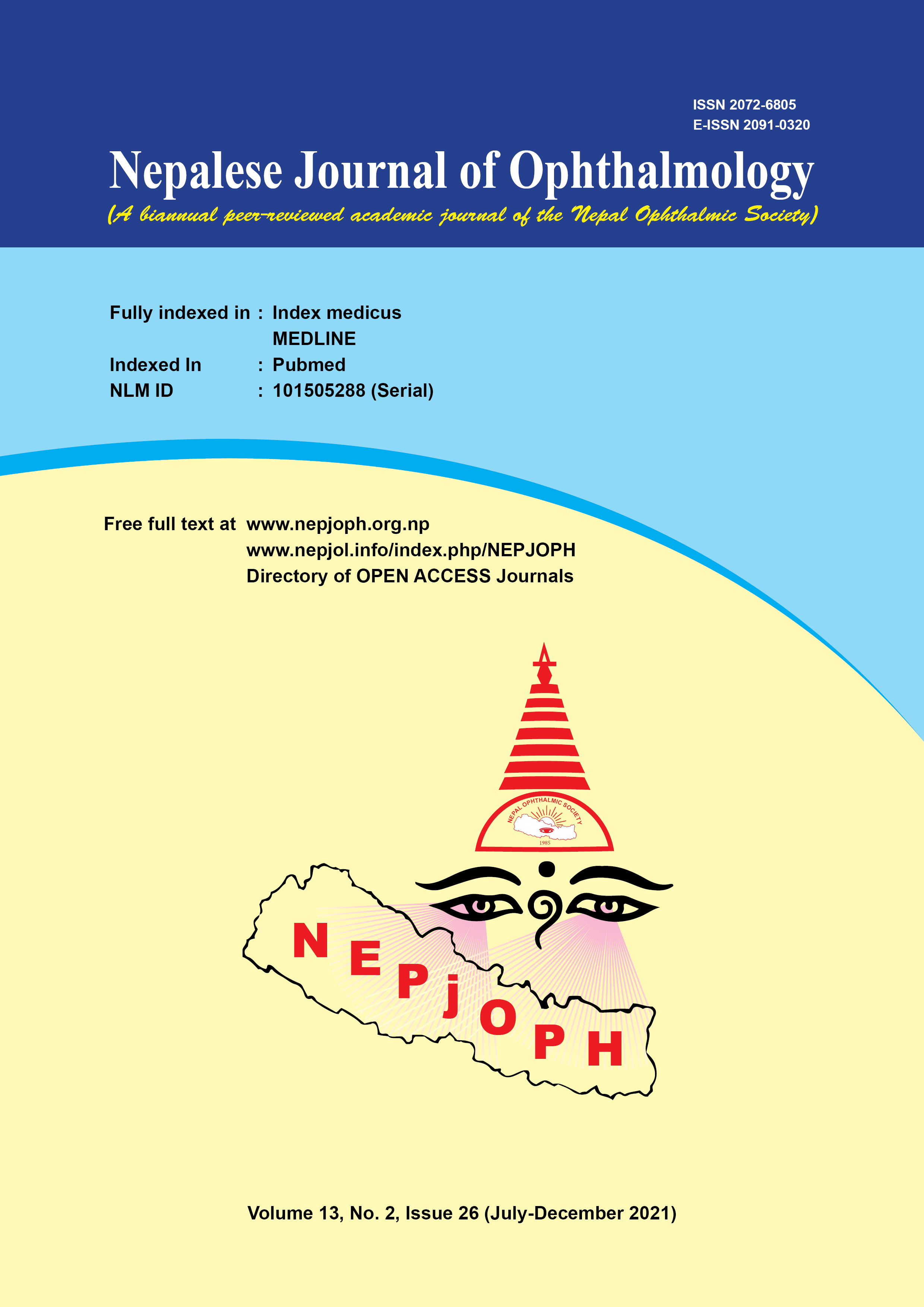Comparison of Percent Tissue altered in Topography Guided and Wavefront Optimized Laser-assisted in situ Keratomileusis using Zeiss MEL 80 Excimer Laser
DOI:
https://doi.org/10.3126/nepjoph.v13i2.26665Keywords:
Percent tissue altered, Topography-guided LASIK, Wavefront optimized LASIKAbstract
Introduction: Laser-assisted in situ Keratomileusis (LASIK) is the most commonly performed refractive surgical procedure. The amount of tissue ablated in LASIK affects the safety and long-term outcome. The objective of this study was to compare the percent tissue altered (PTA) in topography guided (TG) and wavefront optimized (WFO) LASIK using Zeiss MEL 80 excimer laser.
Materials and methods: This retrospective observational study was conducted at a tertiary eye center. Patients with moderate myopia who underwent LASIK between June 2016 and January 2019 were divided into two groups (Group I: TG LASIK, 69 eyes; Group II: WFO LASIK, 70 eyes). The groups were compared for preoperative parameters [spherical equivalent (SE), keratometry and pachymetry], intraoperative parameters [ablation depth (AD), PTA and residual stromal bed thickness (RSBT)] and postoperative parameters (vision, SE).
Results: Among preoperative parameters, SE and keratometry were similar while thinnest pachymetry was significantly less in group I. Among the intraoperative parameters, PTA (P < 0.01) and AD (P < 0.01) were significantly less in group I while RSBT (P = 0.54) was not significantly different. Postoperatively at 6 months, 92.75% (64) eyes in group I and 90% (63) eyes in group II had visual acuity of 6/6 or better (P = 0.57). 98.55% (68) and 97.14% (68) eyes in group I and group II respectively had SE refraction within ± 0.5 dioptres.
Conclusion: TG LASIK induces less tissue alteration for given refractive error with similar visual outcome as compared to WFO LASIK which makes TG apparently safer and is the preferred technique for borderline thin corneas.
Downloads
Downloads
Published
How to Cite
Issue
Section
License
Copyright (c) 2021 Nepalese Journal of Ophthalmology

This work is licensed under a Creative Commons Attribution-NonCommercial-NoDerivatives 4.0 International License.
This license enables reusers to copy and distribute the material in any medium or format in unadapted form only, for noncommercial purposes only, and only so long as attribution is given to the creator.




